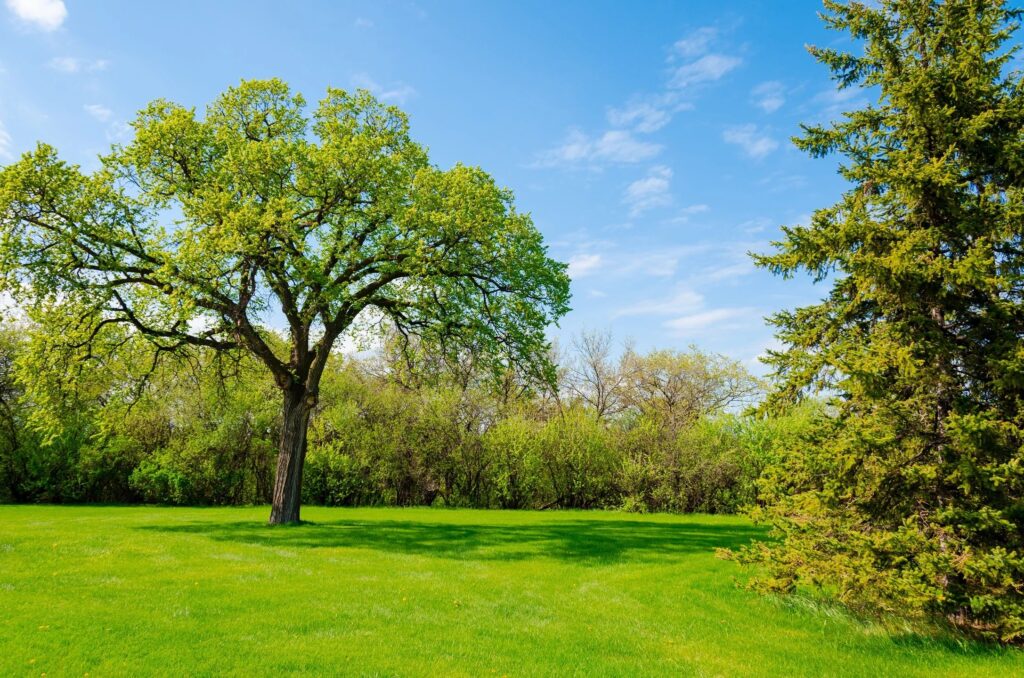By, the Old Guy with the Ponytail
When you look out at your lawn, what do you see?Is it a green expanse, filled with lush, thick grass and free of weeds? If so, you can probably stop reading. If not, we’d like to help sort through the seemingly endless barrage of products, procedures, and practices that are supposed to give you the lawn you want. So let’s look out at your lawn again. What do you see? What’s the most obvious problem? Crabgrass? Weeds? Bare spots? Or is your grass just thin, lacking the rich emerald color we’ve all come to expect from a vibrant lawn?
If you’ve said “Yes” to anything on that list, it’s likely due to one of a few “limiting factors” that affect the health of your lawn.
By addressing these factors, you can improve the quality of your lawn, but remember that there’s no single product or procedure that’s going to give you a picture-perfect front yard. Like anything worth doing, this is going to take work.
Now, onto those limiting factors…
The biggest one for any lawn is your soil. Have you ever tested your soil? If not, you really should. A soil test will tell you what nutrients your lawn needs. There are other things that lead to a healthier lawn, but nutrient availability is where it all begins.
Now, let’s say that you’ve done your soil test. You’ve determined that your lawn is getting enough nutrition. What do you see?
Soil Insights
You see a lawn infested broadleaf weeds, which means it’s time to invest in a weed control product. If nothing else, applying broadleaf weed control will make room for desirable grass. Just be just to follow instructions when applying this product. It’s safer, and environmentally friendly.
Thicker grass not only looks better, it prevents soil erosion, which has been a major issue in New Jersey, as erosion is a key contributor to phosphorous pollution in state waterways.
The next limiting factor we want to mention is crabgrass. You can beat it back by applying a pre-emergent product in the early spring to prevent seeds from germinating or use a post-emergent product to selectively kill crabgrass where it grows.
Soil Tips
But use caution when applying pre-emergent crabgrass control products, as these can also interfere with desirable grass growth. Consult with your local lawn and garden center before applying this product. Once your weeds are under control, it’s time to think about adding grass seed. With weeds out of the way, you have better view of the topography of your lawn. You can see the high spots and low areas. If they’re unacceptable, you can use some topsoil to smooth the lawn’s surface before seeding.
The most limiting factor in seed establishment is soil-seed contact. The more you can do to promote seed-to-soil contact, the better the chances of your seeds finding root.
Effective procedures include topdressing with loose soil or compost, core aeration, seed slicing and thatching prior to over seeding.
The most effective method will depend on your specific circumstances. Again, your local lawn care center will be able to point you to the best way to ensure good seed-to-soil contact.
Best Fertilizer for a Beautiful Lawn
With seeding out of the way, all that’s left is establishing an effective fertilizer and pest control program, and you’ll be on your way to that amazing lawn you’ve been imagining.
And if that seems like a lot of work, don’t worry: you don’t have to tackle this on your own. Visit Mendham Garden Center, where our experts can work with you to find the best way to get your lawn to its greenest.


Leave a Reply